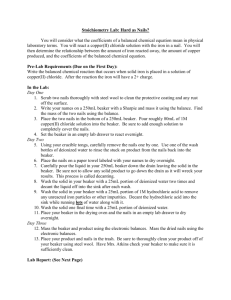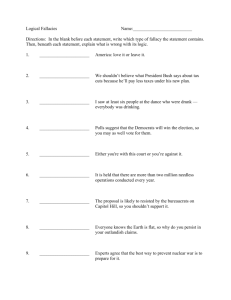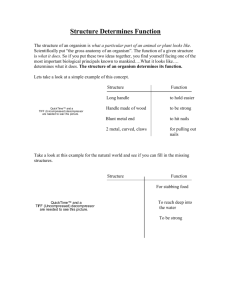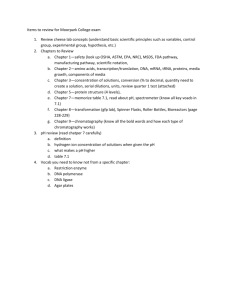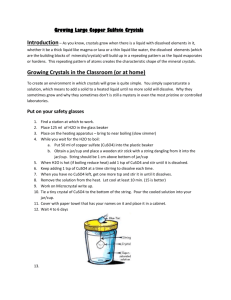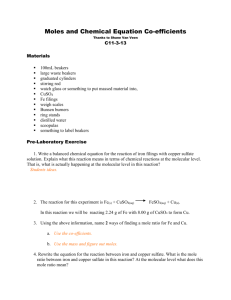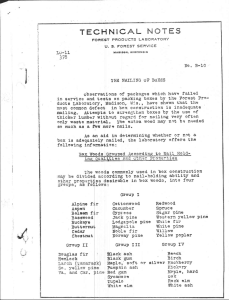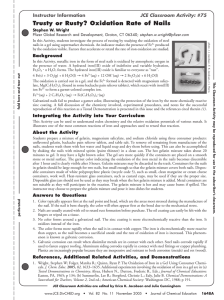Lab 10: The Stoichiometry of a Redox Reaction Purpose: To relate
advertisement
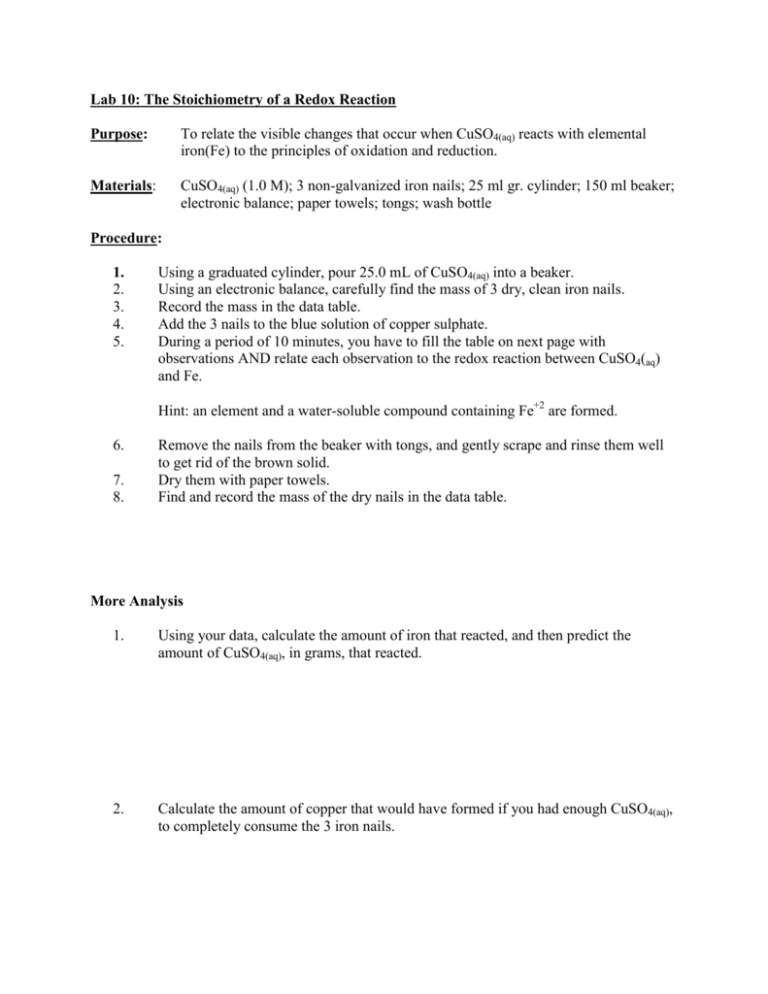
Lab 10: The Stoichiometry of a Redox Reaction Purpose: To relate the visible changes that occur when CuSO4(aq) reacts with elemental iron(Fe) to the principles of oxidation and reduction. Materials: CuSO4(aq) (1.0 M); 3 non-galvanized iron nails; 25 ml gr. cylinder; 150 ml beaker; electronic balance; paper towels; tongs; wash bottle Procedure: 1. 2. 3. 4. 5. Using a graduated cylinder, pour 25.0 mL of CuSO4(aq) into a beaker. Using an electronic balance, carefully find the mass of 3 dry, clean iron nails. Record the mass in the data table. Add the 3 nails to the blue solution of copper sulphate. During a period of 10 minutes, you have to fill the table on next page with observations AND relate each observation to the redox reaction between CuSO4(aq) and Fe. Hint: an element and a water-soluble compound containing Fe+2 are formed. 6. 7. 8. Remove the nails from the beaker with tongs, and gently scrape and rinse them well to get rid of the brown solid. Dry them with paper towels. Find and record the mass of the dry nails in the data table. More Analysis 1. Using your data, calculate the amount of iron that reacted, and then predict the amount of CuSO4(aq), in grams, that reacted. 2. Calculate the amount of copper that would have formed if you had enough CuSO4(aq), to completely consume the 3 iron nails. Data and Observations: Analysis: (explain observations) Initial mass of the Fe nails=________________ Original colour of solution=___________________ Colour of nail after 3 minutes =__________________________ What’s forming? Show a half-reaction, and identify it as either an oxidation or reduction. Colour of solution after 4 minutes =_____________________ Colour of solution after 10 minutes=_____________________ Other observation(s) Mass of the Fe nails after 10 minutes=_______________ Conclusion: Why does the mass decrease? Show a half-reaction, and identify it as either an oxidation or reduction.


